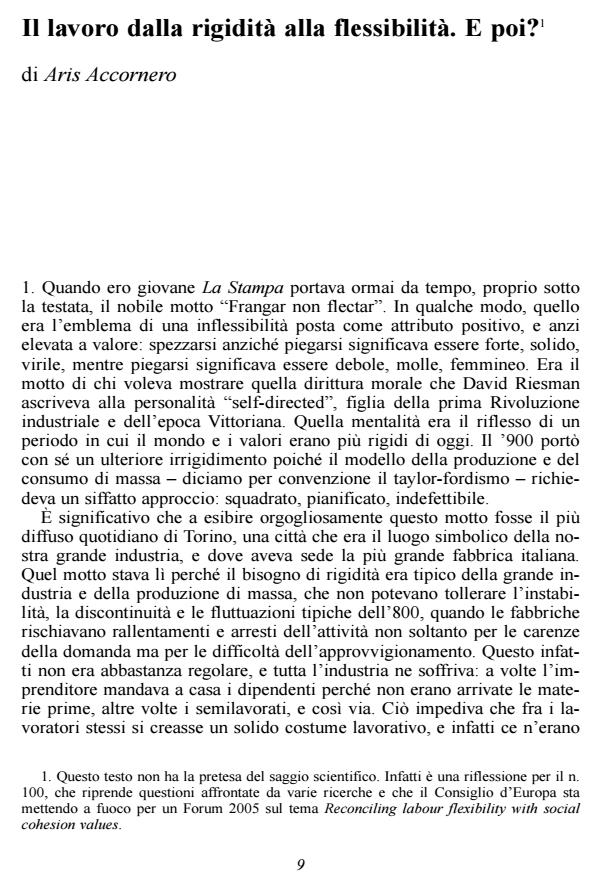Il lavoro dalla rigidità alla flessibilità. E poi?
Journal title SOCIOLOGIA DEL LAVORO
Author/s Aris Accornero
Publishing Year 2006 Issue 2005/100
Language Italian Pages 15 P. File size 45 KB
DOI
DOI is like a bar code for intellectual property: to have more infomation
click here
Below, you can see the article first page
If you want to buy this article in PDF format, you can do it, following the instructions to buy download credits

FrancoAngeli is member of Publishers International Linking Association, Inc (PILA), a not-for-profit association which run the CrossRef service enabling links to and from online scholarly content.
The end of taylor-fordist model has been also the end of industrial rigidity as a value. Mass production, in fact, required not only rigid structures and organizations but also rigid behaviors and approaches. Post-fordist model implies flexibility instead, both as a value and a paradigm, far beyond the world of industry. Work and workers are requested to be as flexible as firm need. That makes almost all jobs less secure and more discontinue than in the taylor-fordist times. (Before those times, work careers were intended to be naturally varied and complex). Therefore workers need an adequate social security system because. Which one? The state is no more expected to guarantee a work stability on the job but a work citizenship on the market. As a matter of fact, a right mix of flexibility and stability is needed by both workers and firms. On the contrary, the risk would be an exceeding level of flexibility, first of all for firms. Why? Because history tells us that taylor-fordism collapsed as a consequence of an exceeding level of rigidity.
Aris Accornero, Il lavoro dalla rigidità alla flessibilità. E poi? in "SOCIOLOGIA DEL LAVORO " 100/2005, pp , DOI: